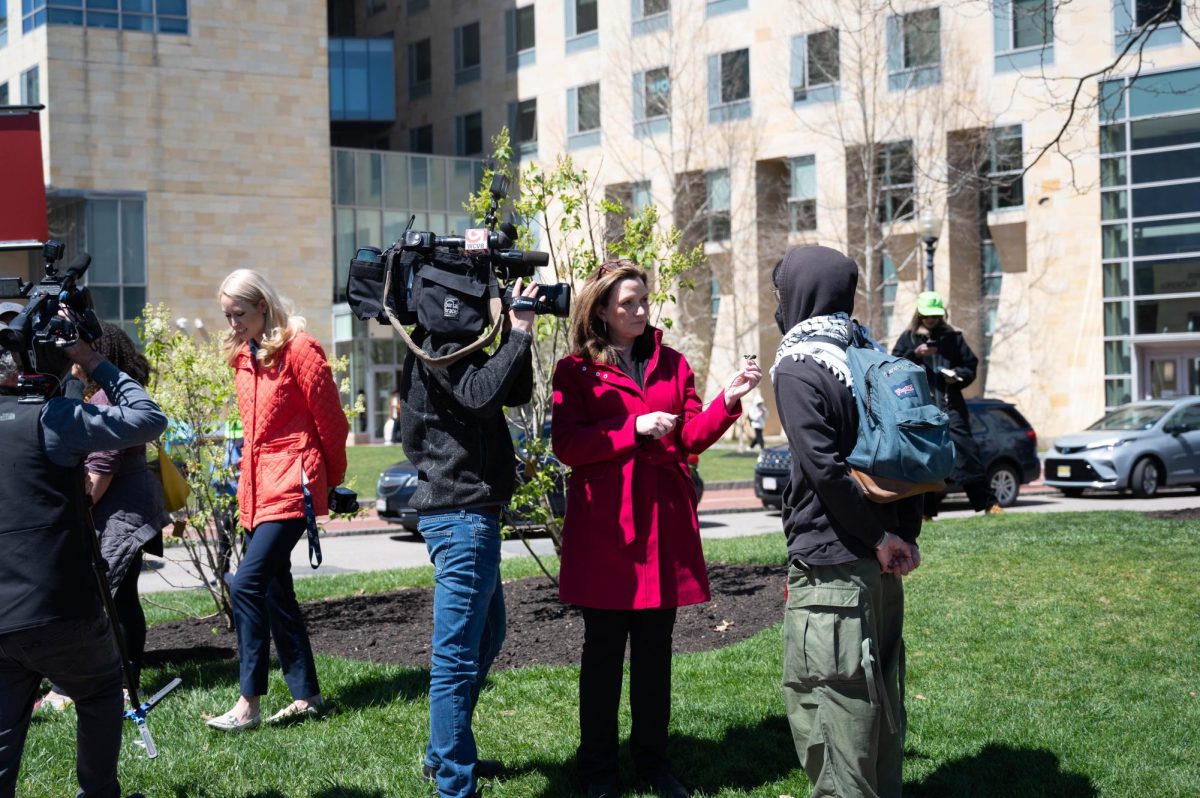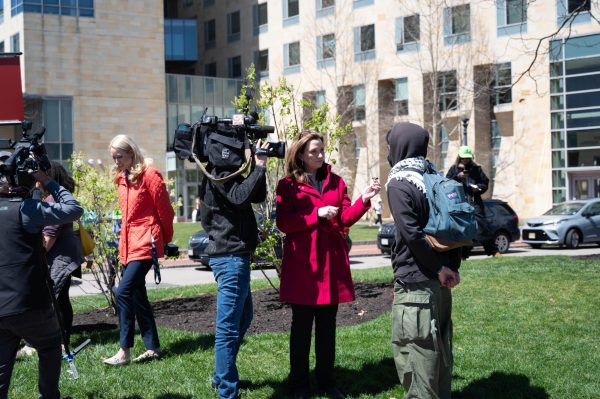Op-ed: Education could fix gentrification and protect underrepresented communties

December 2, 2022
In high school, my AP Biology teacher was working towards a master’s degree in education. I remember talking to her about a paper she was writing on improving the academic performance of students e from predominantly underfunded public schools in high school classes.
She asked me what I thought high school teachers and administrators could do to improve performance in the classroom and on exams from this student demographic. I asked her what “improvement” meant to her and at what level she would like to see these students performing. She said she hoped more of these students would enroll in AP level classes and perform on equal footing in mainstream level classes as students who came from better funded public and charter schools in the area.
I considered my own educational background when thinking of my response. I grew up in the lower-income neighborhoods of my city in Silicon Valley and attended public schools in these areas. Growing up, I didn’t receive the optimal level of education kids in the adjacent, wealthier zip codes did, but an effort was made by some people to find academic talent in my severely underfunded public schools, and I was selected as a prime candidate for programs centered around the idea of being “gifted” and poor.
I don’t know what set me apart from other students attending my school, but I always wondered why an effort was never made to equally distribute the benefits of these programs to everyone, as opposed to strictly focusing on a few students with “academic potential.”
My answer to her was that as honorable and optimistic her end goal was, it was a futile endeavor for high school educators to seek higher enrollment in rigorous classes from this student demographic. Even if they enrolled, the academic deficit couldn’t be met by high school educators and wasn’t for a student’s unwillingness to do better but of a lifelong divestment in the education of students in disadvantaged communities.
The problem didn’t start in high school, it started in grade school. Part of the reason such a stark contrast between the academic performance of lower-income and middle to higher-income students exists in my high school is the severe, ongoing gentrification fueled by the tech industry taking place in the San Francisco Bay Area.
As defined by a Northeastern University study, “gentrification is a phenomenon by which the character of a poor neighborhood is exploited by wealthier individuals who improve housing and attract new and upcoming businesses. This process is usually created by displacing current, or poorer residents in the neighborhood.”
In Boston, gentrification is fueled by the booming student housing business catering to 29 colleges and universities with their 138,000 students. All universities in Boston power this crisis, but an excellent perpetrator is Northeastern. The university physically occupies parts of Roxbury, a predominantly African American and Latinx neighborhood, and bleeds its influence into the neighborhood through the student housing market.
On top of affecting the housing and business markets, gentrification also affects the education system in communities. When poor neighborhoods are unable to provide adequate education due to economic factors exacerbated by gentrification, they are consequently unable to address the issues that make them “opportunity zones” in “most dire need of investment.” This invites investors and tenants to develop unaffordable housing and push out local communities. This stumps the potential generational growth of long-lived communities in these neighborhoods, deprioritizing their livelihoods for the most economic generation possible from expensive developments for affluent residents.
To remedy the impacts of gentrification, development to create affordable housing and business practices must be left to community members and developers. Community members must be equipped with the adequate avenues, information and tools to shape their community to their needs. Education in schools and households must be a top priority for Boston universities looking to aid in the battle against gentrification.
A Stanford University study found when neighborhoods are gentrified, local school districts’ enrollment drops and is not increased or replaced by affluent displacers, leading districts to grapple with budget cuts. Budget cuts lead to a lower quality of education due to a lack of resources and severely impact the maximum level of education attained by children in the community.
Among people aged 25 years and older in Roxbury, 51.7% less people in Roxbury attain a higher degree than the Boston population at large, 47.9% more people only have a high school diploma and 68.2% more did not attain a high school diploma. This holds community members back from attaining higher paying jobs that could allow them to invest in and preserve their communities.
“When individuals have inadequate housing, limiting their opportunities and the development of human capital [such as poverty on schools] there is an overall economic impact,” according to a study by Portland State University. This harsh reality can be seen in the contrast in the median household income in Roxbury of $25,937 in 2015, to the Boston median of $55,777 the same year, per the Boston Planning & Development Agency.
To make matters worse, the household income to live comfortably in Boston is $120,900, adding to the strain of gentrification which causes “higher rates of business closure and higher rates of transition to higher price points” in the communities affected, according to a study by the National Bureau of Economic Research.
To escape the loop of poor living standards from low wage jobs because they lack proper certifications to enjoy higher salaries, families who have called their neighborhoods home for generations are forced to leave in pursuit of more affordable housing and sustainable living.
For an entire community to experience this cycle is criminal. The loss of culture cannot be overstated, and the right to secure housing should never be disputed nor periled in the interest of making more money from affluent occupiers, let alone temporary college renters who turn colorful communities into student ghettos.
Universities in Boston must step in to harness public education in gentrified neighborhoods to aid in the preservation and development of these underrepresented communities for their interest.
One step higher education has already taken to represent students from these neighborhoods is to award fully comprehensive scholarships to top universities in Boston, such as the Boston Scholars scholarship awarded to Boston-native valedictorians and other high achieving students.
However, this reinforces the investment in overly achieving students in poor neighborhoods while leaving a plethora of valuable citizens behind.
More importantly, investment in grade school education through literacy programs is more beneficial. “Kids with poor reading skills are four times more likely to not graduate high school at all,” according to a report by Ralph Smith, executive vice president of the Annie E. Casey Foundation.
A good example of this is Fordham University’s Summer Reading Skills Programs taught by instructors from their Institute of Reading Development that help children become more confident readers. If similar programs are made free of charge with student volunteers from universities, the financial barrier already posed can be broken.
Finally, end the magnet-school “beefing up” strategy for public schools to be more enticing to affluent occupiers in neighborhoods experiencing gentrification. Money that goes to these schools can’t be put toward students who need and will benefit more from the resources, explained investigative journalist Nikole Hannah-Jones in an interview for the Atlantic.
Instead of upgrading public schools, local governments should prioritize integrated schools for everyone by creating magnet schools in urban neighborhoods and persuading investors to buy into the programs. Investing in these schools that affluent parents don’t see in a bad light and providing parents in underrepresented neighborhoods transportation and resources to send their children to these schools can positively impact the education system. Attracting diverse students from different neighborhoods is key in ameliorating these issues.
My AP Biology teacher was perplexed by my answer, and our conversation took a trivial turn. I was saddened by the investment in my education from “gifted children” scouts and the obvious negligence displayed to my friends who I saw on equal footing as myself, but I am confident more can be done for the purposely overlooked for generations to come.
Noelia Arteaga is a third-year journalism and political science combined major. She can be reached at [email protected].

















